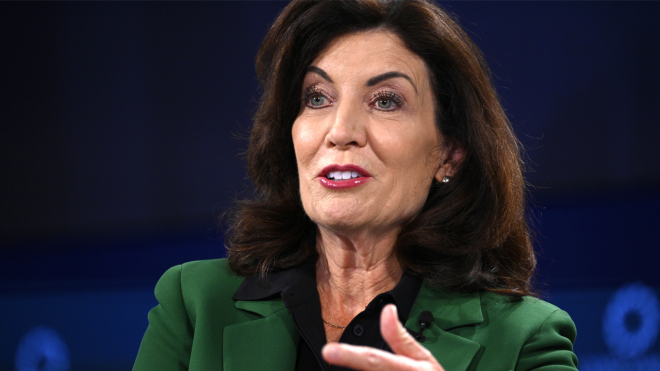Tracy J. Lee for NPR, image 1 Tracy J. Lee for NPR, image 2. Barrie Hardymon, a parent of two children aged 8 and 11, says: “Every time I see another tragedy like the kind of racist shootings we’ve seen in recent days and years, there’s something very terrifying that comes into my brain.” Buffalo, El Paso, Highland Park, and Christchurch. The criminal is almost ALWAYS a young, white man.
I’m bringing up two young, white guys.
The idea that your child might become a victim is horrifying. To consider that your child might be… is a very different kind of worry. I’m hesitant to say it out loud: a perpetrator. a racialist the sexist. a racist. someone who might even be open to those concepts.
Many of these concepts are found in the internet environment that our children frequent since we are aware of where they originate. Not even the locations that explicitly declare their status as bastions of white supremacy come to me when I mention Roblox, YouTube, all gaming platforms, and social media.
CPR KIT Kids are remarkably adept at navigating that online environment. There is hardly any way to avoid it.
It’s challenging to stay calm.
I was unsure of whether I was approaching the topic with MY kids in the correct way, particularly when it came to the risks associated with using the internet.
I then made an expert call. Christine Saxman frequently discusses this with parents and teachers. She has been facilitating racial and social justice issues for nearly 20 years.
And the first thing I need to say to you is, “Don’t freak out!” Surprisingly, what I discovered was empowering.
These are the most important advices Saxman provided me. And I must admit that my home is already more calmer. (On one condition only: Life Kit, I eagerly await your episode on discouraging children from making “deez nuts” jokes in polite society.)
KNOW THE RADICALIZATION SIGNS Knowing when your child may be going down the rabbit hole is crucial. What warning signals should you look out for? Saxman advised me to pay close attention to the jokes your children are creating and responding to. Be especially watchful if they start to use humor that dehumanizes others, especially homophobic, transphobic, and sexist jokes. Because it’s “only” a joke, it allows those with racial agendas to maintain their convincing denial.
“Saxman claims that making jokes about LGBT issues is a frequent starting point for many different conspiracy theories. If you can visualize the ways in which they can utilize each of these various levers to pull you in, it nearly looks like a Venn diagram. First, the jokes grow worse and worse, and then the material gets worse and worse. Because once they’ve normalized this type of discourse—that it’s acceptable to demean women, LGBT people, and the idea that a Jewish conspiracy controls everything—the that’s starting point for going deeper and deeper.”
CPR KIT She also suggested being aware of the various forms this kind of seduction might take. Western States Center has a comprehensive toolkit that can assist you with recognizing the various forms radicalization can take, such as the dissemination of memes and jokes to appear “edgy” or even the assertion of conspiratorial ideas in daily life.
ASSIST YOUR CHILDREN IN REALIZING THEIR OWN POWER They must learn to ask the correct questions of their friends as well as the stuff they view. Encouragement to identify and develop one’s own agency is helpful, especially with older children.
Saxman offers encouraging expressions like “I think you’re a critical thinker.” or “I’m aware that you enjoy asking inquiries.” You are “co-creating and learning about things together” at that point, she claims.
My older kid has been lot more forthcoming about the dubious things he encounters online since I helped him develop his confidence in his own judgment. It’s challenging to strike a balance between trust and a fair amount of skepticism, but doing so has paid off in the short time I’ve been stressing it, and we’ve been chatting a lot more.
AVOID OVERREACTING! YOU NEED TO CONTINUE TO BE IN CONTACT WITH HER I tend to respond. I enjoy responding. However, Saxman argued that when you lose control out of fear, teenagers are less likely to come to you when they genuinely need you. I’ve therefore started educating myself to be calm and raise topics out of interest rather than fear. Again, there’s that delicate balance to be struck; the world can be quite frightening, but I don’t want to instill in the youngsters the idea that their challenges are insurmountable.
I thought that watching the movie The Social Dilemma with them was incredibly beneficial for communicating my own concerns about how they might get drawn in. It’s not a flawless movie (at its core, it’s a tech-bro apology tour), but it clarifies how algorithms target white boys in particular and stresses the value of letting users choose what they want to watch on Instagram and YouTube rather than just accepting the video that is presented to them next.
communicate with other parents frequently It can be uncomfortable. But you must take action! When there are people of different ages living in the same home, not every family has the same rules around screens and internet content. For instance, it’s crucial for you to be aware of the fact that your child has a friend who has unrestricted access to YouTube and that they are watching it whenever they visit their friend’s house as well as how the parents are discussing it.
CPR KIT It might entail working to resolve conflicts between opposing viewpoints on what’s acceptable. However, Saxman advises being receptive to learning more about the reasons why one parent’s guidelines may vary from another because these are crucial discussions. She says, “Just be curious,” and advises you to inquire as to how they arrived at that conclusion and what it means for their connection with themselves and their child.
You learn more about what your own child is exposed to and what they are reading, watching, and doing as you chat more about what other parents are observing and discussing in their own homes. (And if you can cultivate those connections, you’ll get valuable advice! Another parent introduced me to The Social Dilemma as a teaching tool.)
ABOVE ALL, BE INQUISItive Hey youngsters On TikTok, what are you doing? Which is good? What is amusing? This is a person I like! Why do you suppose I’m old? Who do *you* like, then? Which YouTuber is your favorite? What sort of things do you observe? What causes you to smile? Normalize your curiosity about their online activities. Try out Mario Kart! Make them create a Minecraft home for you. Relationships are forged by curiosity.
I’ll conclude with this. Here’s what Saxman answered when I asked whether there was anything in her profession that offered her optimism: “I have a lot of hope for the future of youth. I can sense the struggles they have faced with COVID. They have endured everything. They do self-regulate. Each other is being watched. I have faith in them. In order to support it, I want to build a container. And from other adults, that is what I want to ask.”
A FINAL NOTE… I want to underline that the main focus of this episode is prevention and that none of this matters if you aren’t teaching your children who are fluent about racism and antiracism.
A few sources are listed below:
How to Raise an Antiracist is the title of a new novel by Ibram X. Kendi. Here are a few of Kendi’s book suggestions for teaching your children about race. Talking to White Kids About Race and Talking to Young Children About Race are both covered in an episode of Life Kit. This episode’s audio part was created by Michelle Aslam. Please get in touch with us. Send us an email at LifeKit@npr.org or leave a message at (202) 216-9823.
Subscribe to our newsletter or listen to Life Kit on Apple Podcasts and Spotify .













